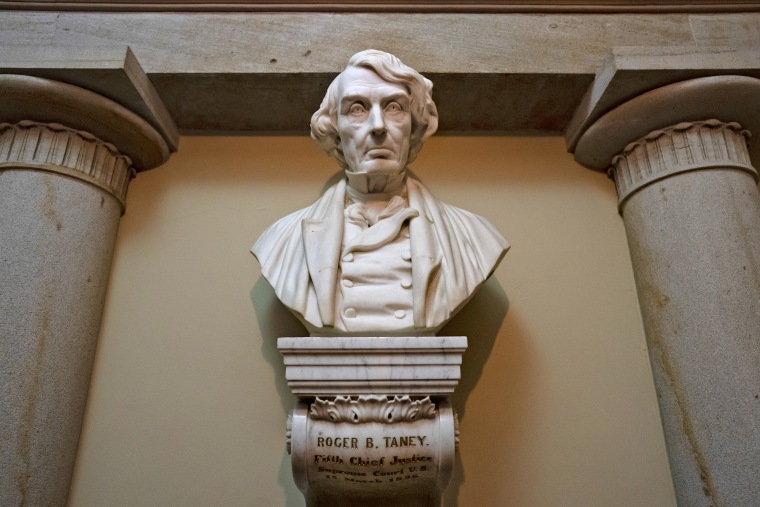It may not have been the highest profile legislative effort of the lame-duck session, but as NBC News reported, Congress has agreed to make an important change to the statue collection on Capitol Hill.
The House passed a bill Wednesday that would remove from public display at the U.S. Capitol a statue of Supreme Court Chief Justice Roger Taney, who wrote the 1857 Dred Scott decision, which defended slavery and denied the citizenship of Black Americans.
On the House floor, Democratic Rep. Zoe Lofgren of California explained that the bill was literally about “who we put on a pedestal.”
The resolution declared that Taney’s authorship of the shameful decision “renders a bust of his likeness unsuitable for the honor of display to the many visitors to the Capitol.”
The measure added, “While the removal of Chief Justice Roger Brooke Taney’s bust from the Capitol does not relieve the Congress of the historical wrongs it committed to protect the institution of slavery, it expresses Congress’s recognition of one of the most notorious wrongs to have ever taken place in one of its 19 rooms.”
Taney’s bust will be replaced with a bust of Thurgood Marshall, the court’s first Black justice.
At this point, readers are probably saying, “Just get to the part where you tell us how many Republicans opposed the bill.” While the sentiment is understandable, in this case, it doesn’t apply: The measure passed the Senate last week by unanimous consent, and it cleared the House yesterday on a voice vote. It now heads to the White House, where it will be signed by President Joe Biden.
That said, yesterday wasn’t the first time lawmakers were asked to make this change.
As regular readers might recall, in the summer of 2020, the Democratic-led House brought up a related measure to remove statues honoring Confederates and the Taney bust from the Capitol. “Defenders and purveyors of sedition, slavery, segregation, and white supremacy have no place in this temple of liberty,” House Majority Leader Steny Hoyer said at the time.
That bill passed 305 to 113 — and while some Republicans voted with the majority, all 113 opponents, representing a majority of the House GOP conference, were Republicans.
The measure then went to the Senate, where there was a GOP majority at the time, which ignored it entirely.
Last year, Democrats tried again, taking up a resolution to remove Confederate statues from public display in the Capitol as well as the Taney bust. It passed the House, 285 to 120, and once again all 120 of the opponents were Republicans.
To get the bill across the finish line, it had be narrowed, focusing solely on Taney, not Confederate statues.
It’s a step in a progressive direction, though it should’ve been easier, and the larger debate about who’s honored on the Hill isn’t over.
Related:

